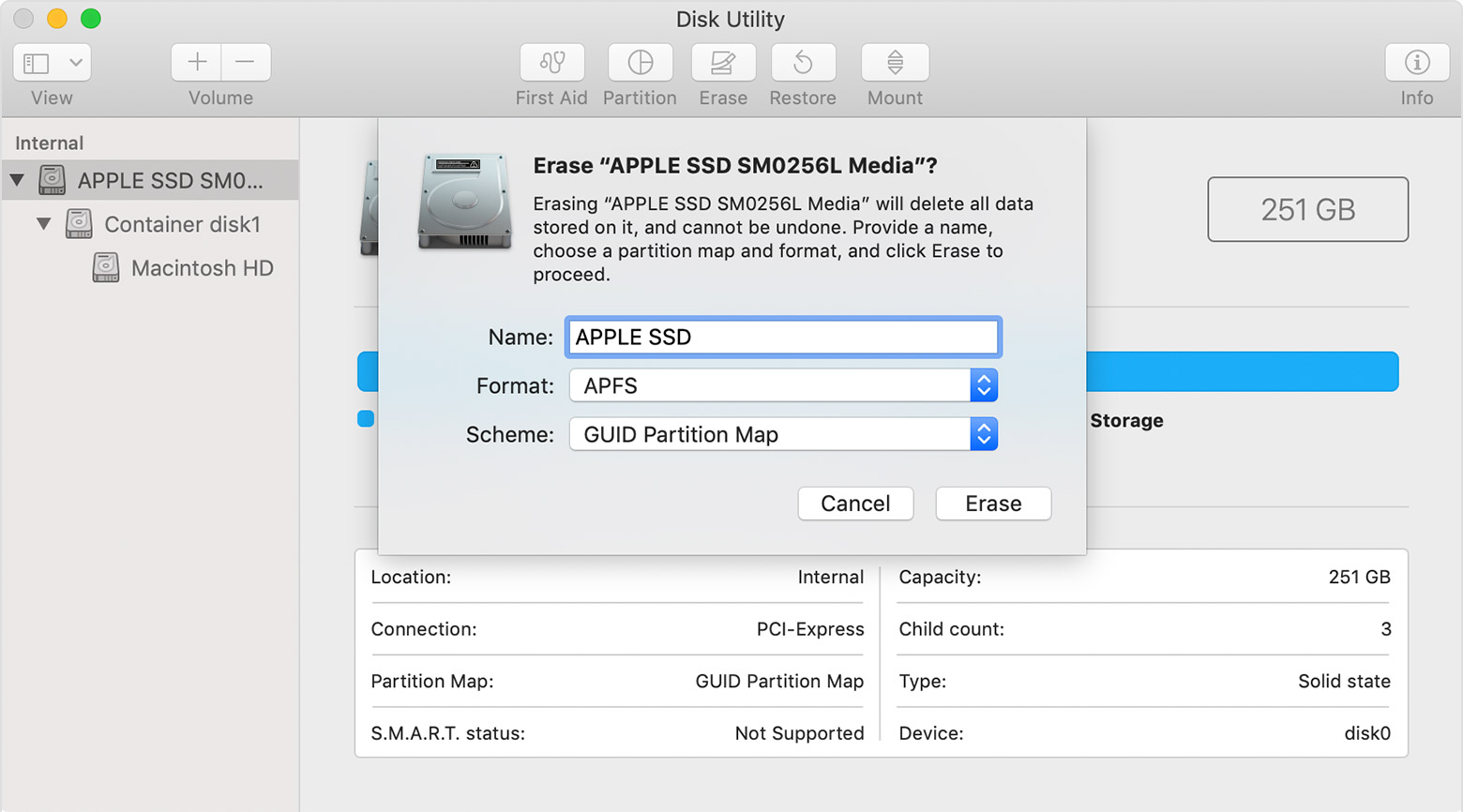
- Mac Disk Format Types
- Format Disk Drive Mac
- Format Disk Drive For Mac
- Format Mac Disk On Pc
- Format Disk Drive-in Mac
Mac Disk Format Types
Part 1: How to format DVD-RW on a Mac. If you want to know exactly how to format a DVD-RW on Mac so that you can reuse it for other data, here is what to do: Step 1. Place the DVD-RW you want to format into your Mac. If there are any files you want to keep that are on the disc, be sure to copy them to your hard drive. Launch Disk Utility. Attach the hard drive to the system that you wish to format using Mac HFS+ file system. Download Paragon Partition Manager Free if you have not already, then install the software. While the program loads, it will scan the disks attached to the system and present a list. Now you will need to select the disk you wish to format. The graphical Disk Utility tool can't yet format drives as APFS. However, Apple's documentation notes that you can use the diskutil command to format a partition or disk image as APFS. First, figure out which the device identifier of the disk you want to format. To do this, open a Terminal window and run the following command: diskutil list.
Method 1: Format a USB Drive on Mac OS with Disk Utility. How to run microsoft visual studio on mac. Step 1: Insert the USB waiting to be formatted to a Mac computer. Step 2: Navigate to Applications Utilities, and click it twice to open it. Step 3: Select the drive you want to format and click on Erase. Step 4: Rename the USB drive (optional), and choose one file system from the options. Double-click Disk Utility. On the left side of the window are the drives connected to the computer. Select the capacity of the drive respective to the one containing the device you wish to format then click the Erase tab. Example: If the drive is called 'NO NAME', directly above that, you should see the drive capacity of 'XXXX'.
These steps apply only to Mac computers with an Intel processor. The steps to erase a Mac with Apple silicon are different.
Before erasing your Mac
- Make a backup of any files that you want to keep. Erasing your Mac permanently deletes its files.
- If you want to restore your Mac to factory settings, such as to prepare it for a new owner, first learn what to do before you sell, give away, or trade in your Mac. Then erase your Mac as the final step.
Use Disk Utility to erase your Mac
Format Disk Drive Mac
- Start up from macOS Recovery: Turn on your Mac, then immediately press and hold these two keys until you see an Apple logo or other image: Command (⌘) and R.
- If asked, select a user you know the password for, then enter their administrator password.
- From the utilities window, select Disk Utility and click Continue.
- Select Macintosh HD in the sidebar of Disk Utility. Don't see Macintosh HD?
- Click the Erase button in the toolbar, then enter the requested details:
- Name: Macintosh HD
- Format: APFS or Mac OS Extended (Journaled), as recommended by Disk Utility
- Click Erase Volume Group. If you don't see this button, click Erase instead.
- If asked, enter your Apple ID. Forgot your Apple ID?
- After the erase is done, select any other internal volumes in the sidebar, then click the delete volume (–) button in the toolbar to delete that volume.
Disregard any internal volume named Macintosh HD or Macintosh HD - Data, as well as any volumes in the External and Disk Images sections of the sidebar. - Quit Disk Utility to return to the utilities window.
- If you want to start up again from the disk you erased, select Reinstall macOS in the utilities window, then click Continue and follow the onscreen instructions to reinstall macOS.
If you don't see Macintosh HD in Disk Utility
Format Disk Drive For Mac
Exfat ntfs mac. Your built-in startup disk should be the first item listed in the Disk Utility sidebar. It's named Macintosh HD, unless you changed its name. If you don't see it there, choose Apple menu > Shut Down, then unplug all nonessential devices from your Mac and try again.
If your disk still doesn't appear in Disk Utility, or Disk Utility reports that the erase process failed, your Mac might need service. If you need help, please contact Apple Support.
Format Mac Disk On Pc
Learn more
Format Disk Drive-in Mac
For more information about using Disk Utility, see the Disk Utility User Guide.

